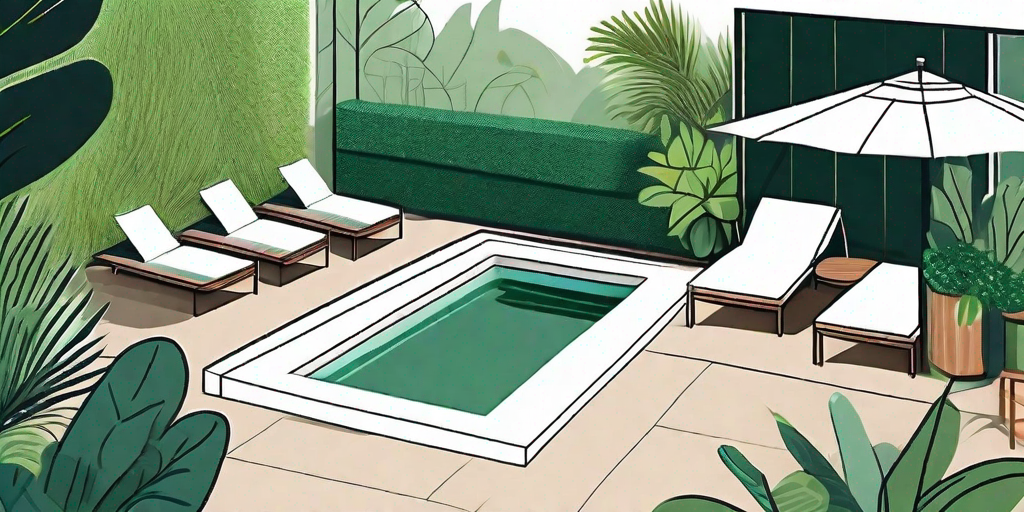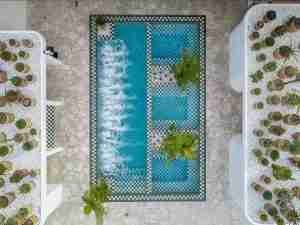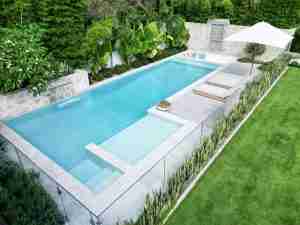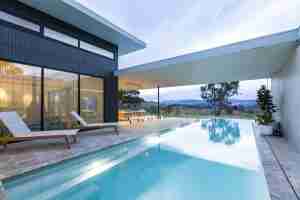A plunge pool is a compact and versatile addition to your outdoor living space. It offers a refreshing oasis to escape the heat and relax during hot Australian summers. In this article, we will explore the concept of a plunge pool, its design and features, the benefits of having one, as well as installation and maintenance tips. We will also address some frequently asked questions to provide a comprehensive understanding of plunge pools.
Understanding the Concept of a Plunge Pool
A plunge pool is a small, deep pool designed for soaking and cooling off rather than swimming or exercising. It is typically shallower than a regular swimming pool, ranging from 1.2 to 1.8 meters in depth. The compact size allows for easy installation in small backyard spaces, making it a popular choice for homeowners with limited area.
But what makes a plunge pool truly unique is its versatility. Not only does it offer a refreshing escape from the scorching summer heat, but it also serves as a stunning focal point in any outdoor space. Imagine yourself lounging by the poolside, surrounded by lush greenery and the soothing sound of water gently cascading into the pool. It’s a picturesque scene that instantly transports you to a tranquil oasis.
Furthermore, plunge pools are not just limited to residential settings. They are also commonly found in luxurious resorts and spas, where they are used to create a serene and rejuvenating atmosphere. The allure of a plunge pool lies in its ability to provide a sense of calm and relaxation, allowing individuals to unwind and recharge amidst the hustle and bustle of everyday life.
The Purpose and Use of a Plunge Pool
The primary purpose of a plunge pool is to provide a refreshing and invigorating experience. It allows you to immerse yourself in cool water, providing relief from the intense summer heat. Plunge pools are often used for relaxation, hydrotherapy, and aquatic exercise. They offer a convenient solution for those who want a quick dip or to enjoy the benefits of hydrotherapy without the need for a large swimming pool.
When it comes to relaxation, a plunge pool offers the perfect setting. Picture yourself sinking into the crystal-clear water, feeling the tension melt away from your body. The compact size of the pool creates a more intimate and cozy atmosphere, allowing you to fully immerse yourself in the moment of tranquility.
In addition to relaxation, plunge pools are also commonly used for hydrotherapy. The therapeutic benefits of water have been recognized for centuries, and a plunge pool provides the ideal environment for hydrotherapy treatments. Whether it’s soaking in warm water to soothe sore muscles or utilizing jets for targeted massage, a plunge pool can help alleviate aches and pains, promoting overall well-being.
Furthermore, plunge pools are a great option for those who want to incorporate aquatic exercise into their routine. The depth of the pool allows for various water-based activities, such as water aerobics or swimming against a current. These exercises provide a low-impact workout that is gentle on the joints while still offering the benefits of cardiovascular exercise.
Overall, a plunge pool is more than just a small, deep pool. It is a sanctuary of relaxation, a haven for hydrotherapy, and a space for aquatic exercise. Its compact size and versatility make it a popular choice for homeowners and establishments alike. So, whether you’re looking to create your own private oasis or enhance the ambiance of a resort, a plunge pool is a perfect addition to any outdoor space.
The Design and Features of a Plunge Pool
Typical Dimensions of a Plunge Pool
A plunge pool typically ranges in size from 2 to 4 meters in length and 2 to 3 meters in width. The compact dimensions make it suitable for small outdoor spaces, urban rooftops, or even indoor installations. Despite its modest size, a well-designed plunge pool can still provide plenty of space for relaxation and enjoyment.
Unique Characteristics of Plunge Pool Design
Plunge pools come in various designs and can be customized to suit individual preferences and architectural styles. They can be built above ground, partially above ground, or even be incorporated into the ground. Some popular design options include waterfall features, built-in seating, hydrotherapy jets, and integrated heating systems to extend usability throughout the year.
The Benefits of Having a Plunge Pool
Health and Wellness Advantages
A plunge pool offers numerous health and wellness benefits. The cool water temperature promotes relaxation, relieves muscle tension, and reduces stress. The compact size makes it easier to maintain proper water chemistry and cleanliness, ensuring a hygienic environment for aquatic therapy and exercise. Additionally, the convenience of having a plunge pool at home eliminates the need for frequent trips to public swimming pools or wellness centers.
Space and Cost Efficiency
One of the key advantages of a plunge pool is its space efficiency. Its smaller footprint allows for installation in areas where a traditional swimming pool may not be feasible. With compact dimensions, a plunge pool requires less space for both installation and ongoing maintenance. Furthermore, the cost of constructing and maintaining a plunge pool is significantly lower than that of a standard swimming pool, making it a more budget-friendly option for homeowners.
Installation and Maintenance of a Plunge Pool
Steps in Installing a Plunge Pool
When installing a plunge pool, it is essential to consider factors such as the location, size, design, and site preparation. It is advisable to consult with a professional pool builder who can guide you through the entire installation process. Depending on the specific requirements of your site, the installation may involve excavation, plumbing, electrical work, and the construction of a suitable foundation and surrounding decking or landscaping.
Keeping Your Plunge Pool Clean and Safe
To maintain a clean and safe plunge pool, regular maintenance is crucial. This includes routine cleaning, testing and balancing water chemistry, and inspecting equipment such as filters and pumps. It is recommended to follow the manufacturer’s instructions and seek professional advice for specific maintenance guidelines. Additionally, ensure that necessary safety measures, such as appropriate fencing and secure covers, are in place to prevent accidents and provide peace of mind.
Frequently Asked Questions About Plunge Pools
Are Plunge Pools Heated?
Yes, plunge pools can be heated for year-round enjoyment. Heating options include solar, gas, or electric heat pump systems. The choice of heating method depends on factors such as your location, desired water temperature, and budget.
How Much Does a Plunge Pool Cost?
The cost of a plunge pool can vary depending on factors such as size, design, materials, features, and additional installations like heating systems or decking. As a general estimate, the price range for a plunge pool starts from around $10,000 and can go up to $30,000 or more. It is recommended to obtain quotes from reputable pool builders to get an accurate cost assessment based on your specific requirements.
In conclusion, a plunge pool provides a refreshing and versatile addition to any outdoor space. Its compact size, customizable design, and numerous health and wellness benefits make it an attractive option for Australian homeowners. Whether you seek relaxation, hydrotherapy, or a convenient way to cool off during hot summers, a plunge pool offers a practical solution that enhances your outdoor living experience.




